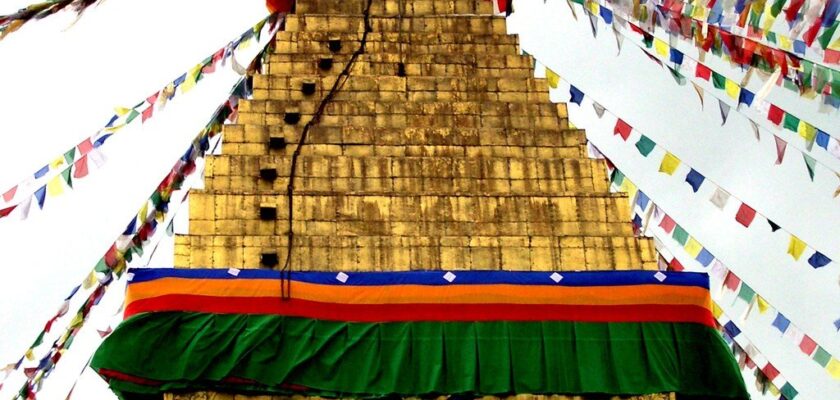Swayambhunath (Monkey Temple)
Swayambhunath is a temple complex on a hill in eastern Kathmandu. Swayambhunath includes a hilltop Buddhist stupa and gompa, a Hindu temple, and 1 other Hindu temple and a Buddhist monastery.
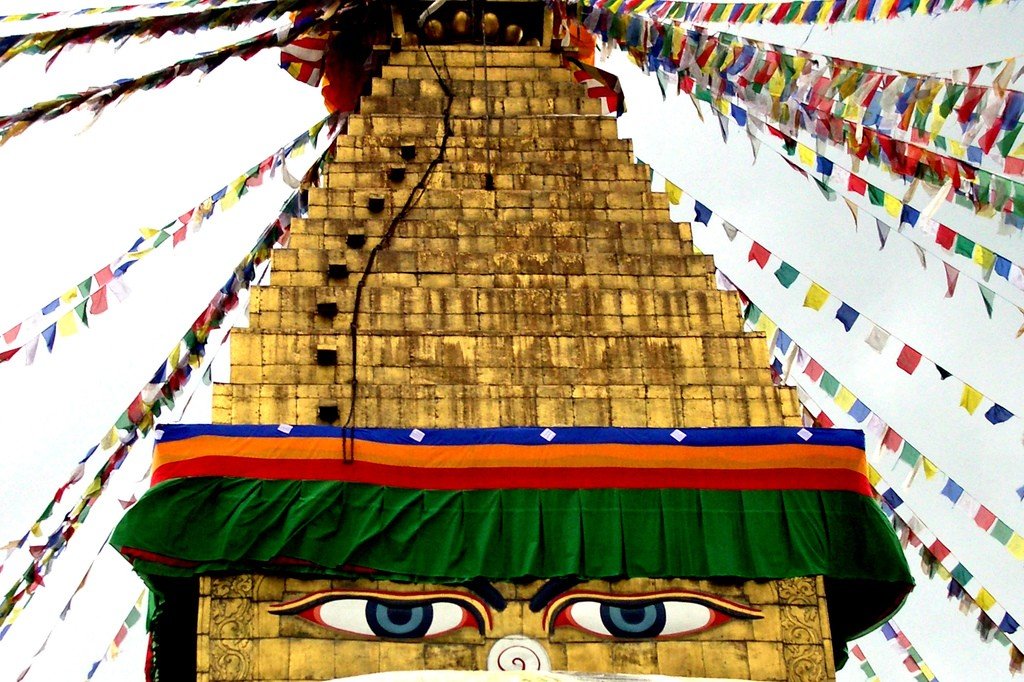
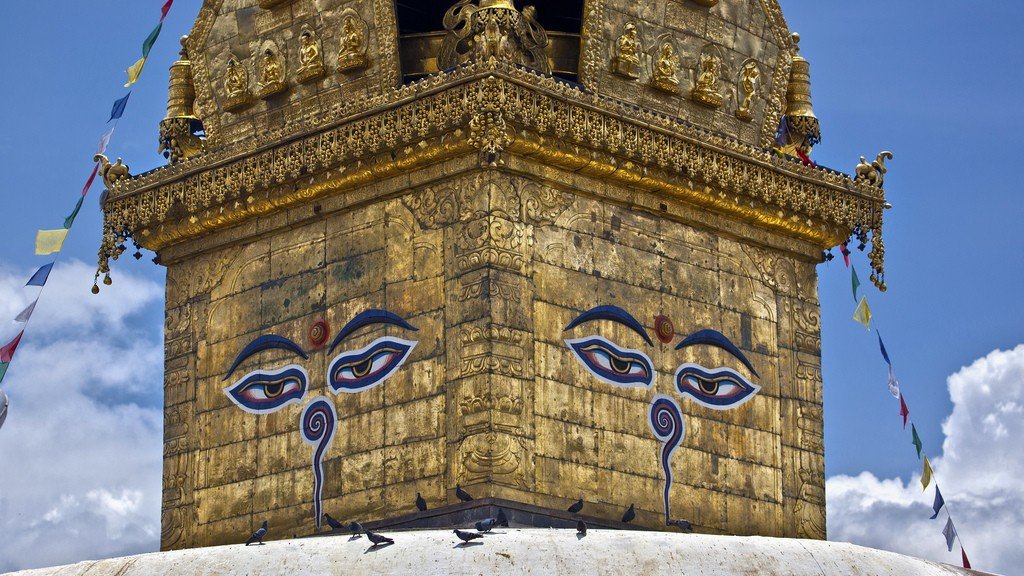
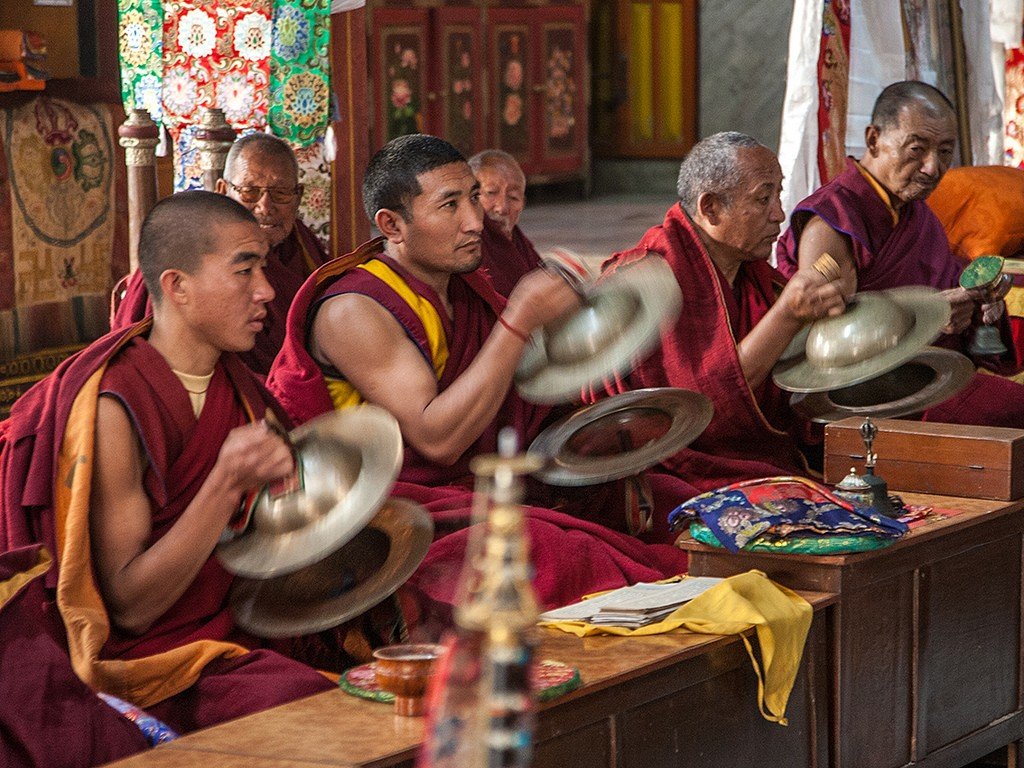
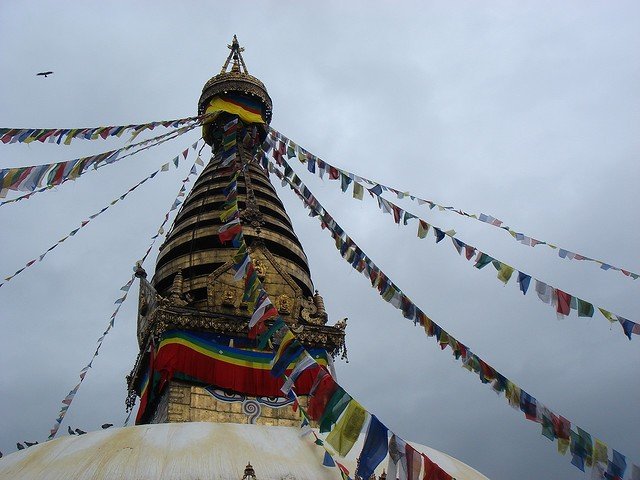
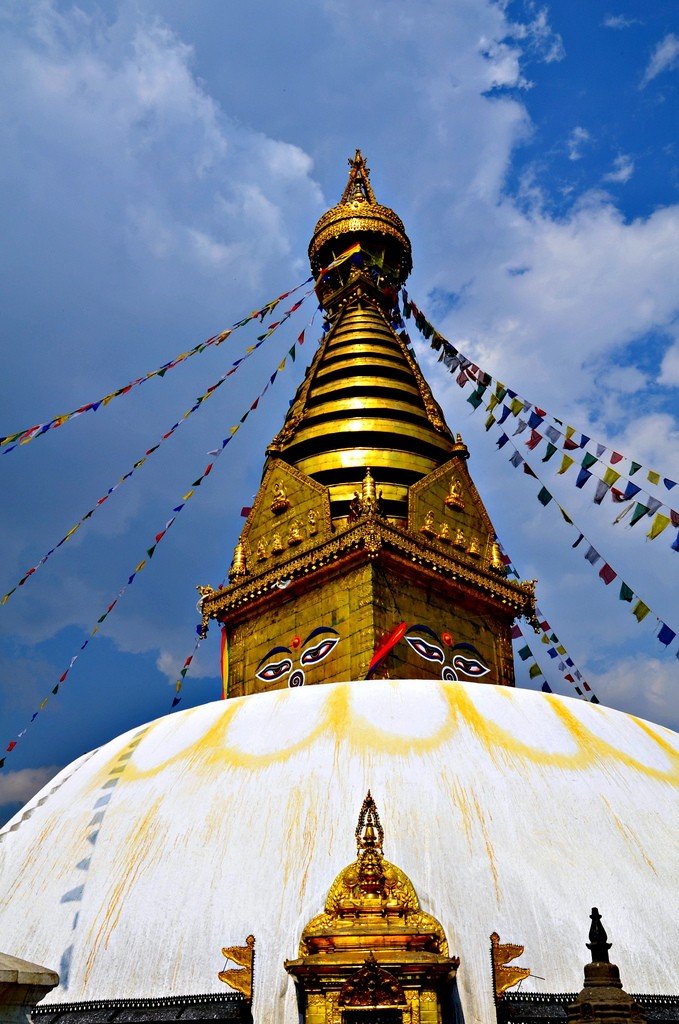
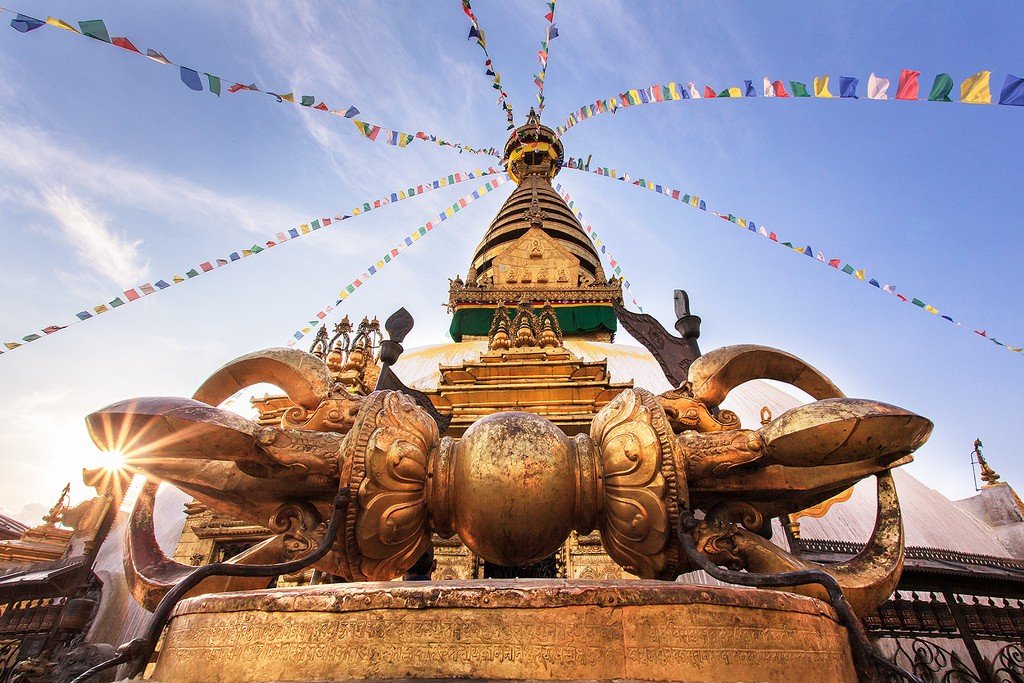
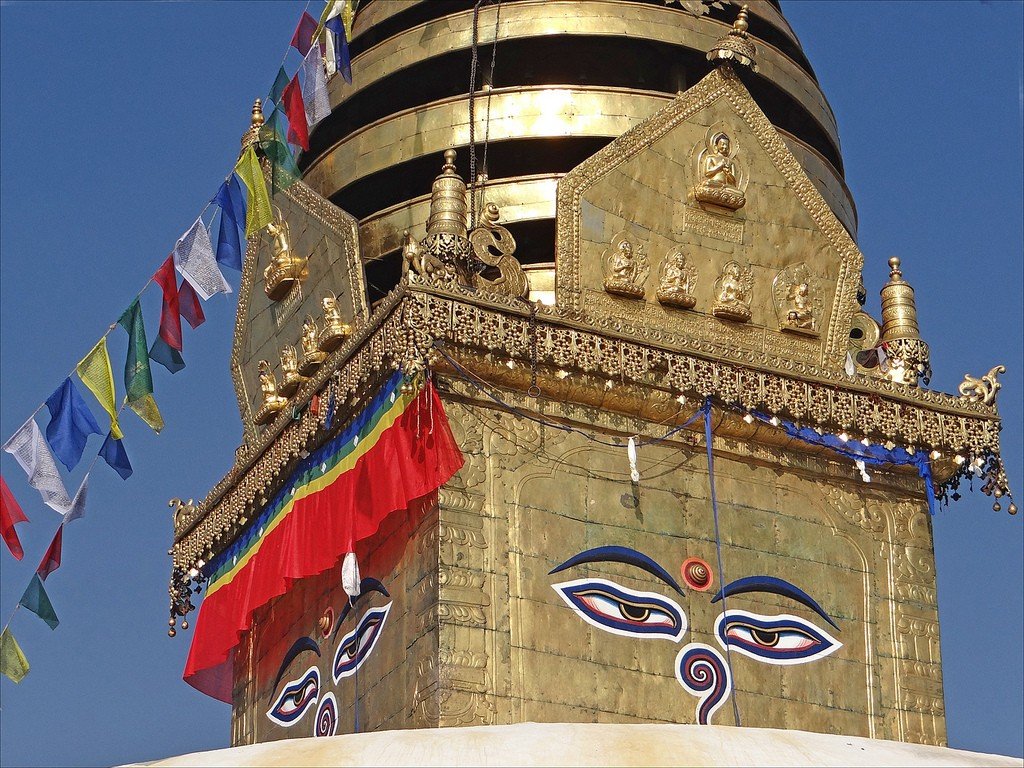
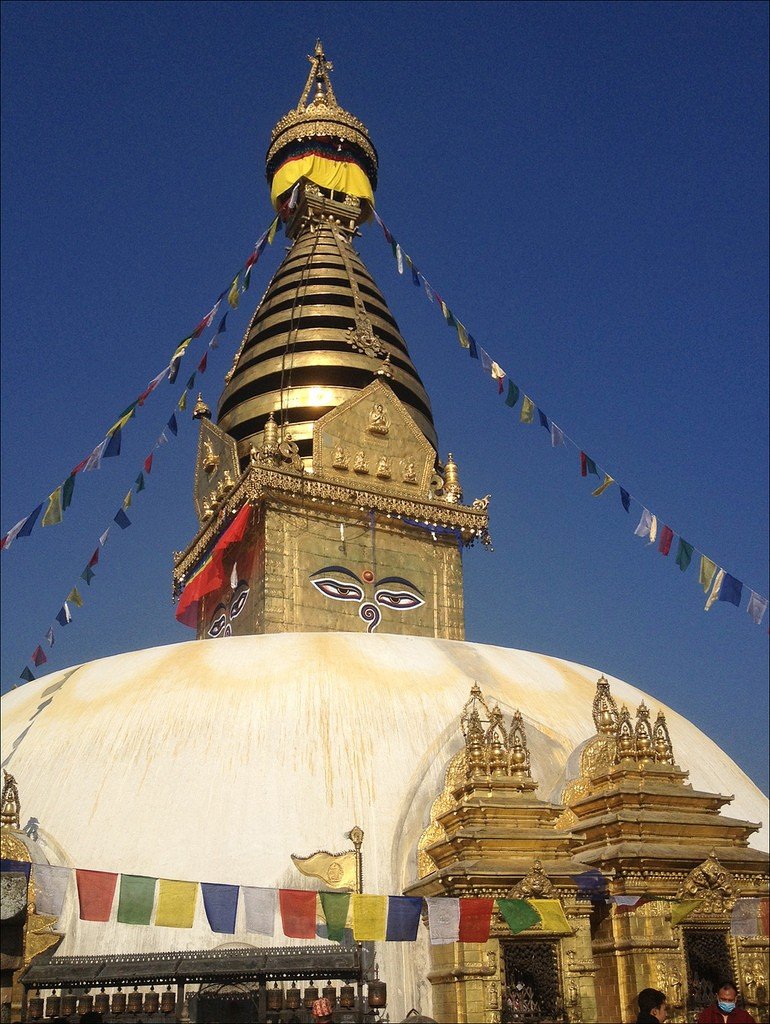
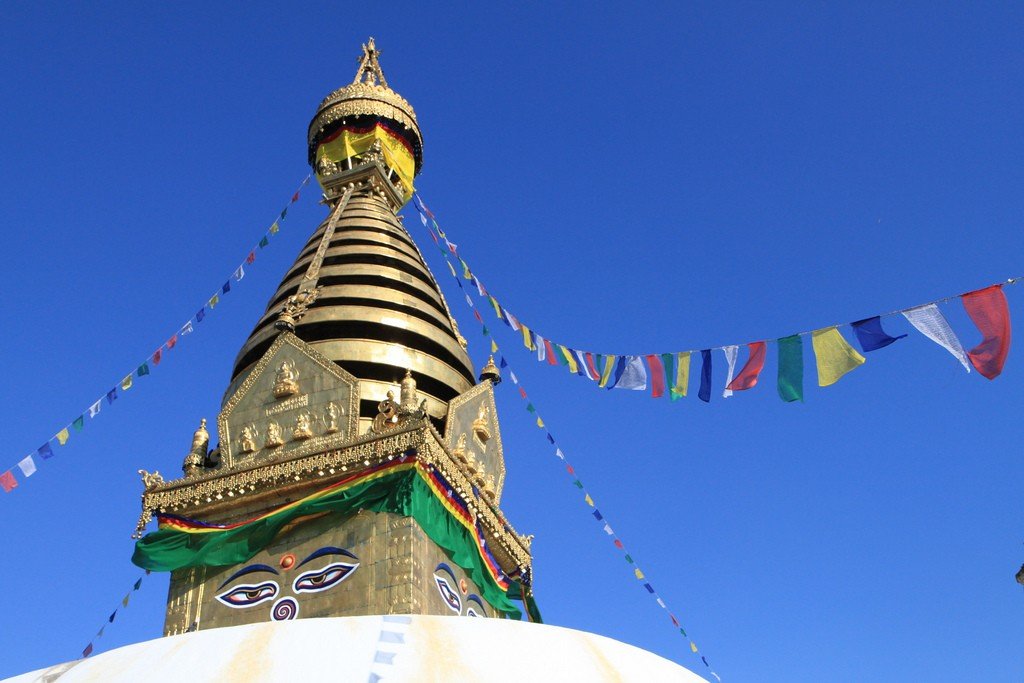
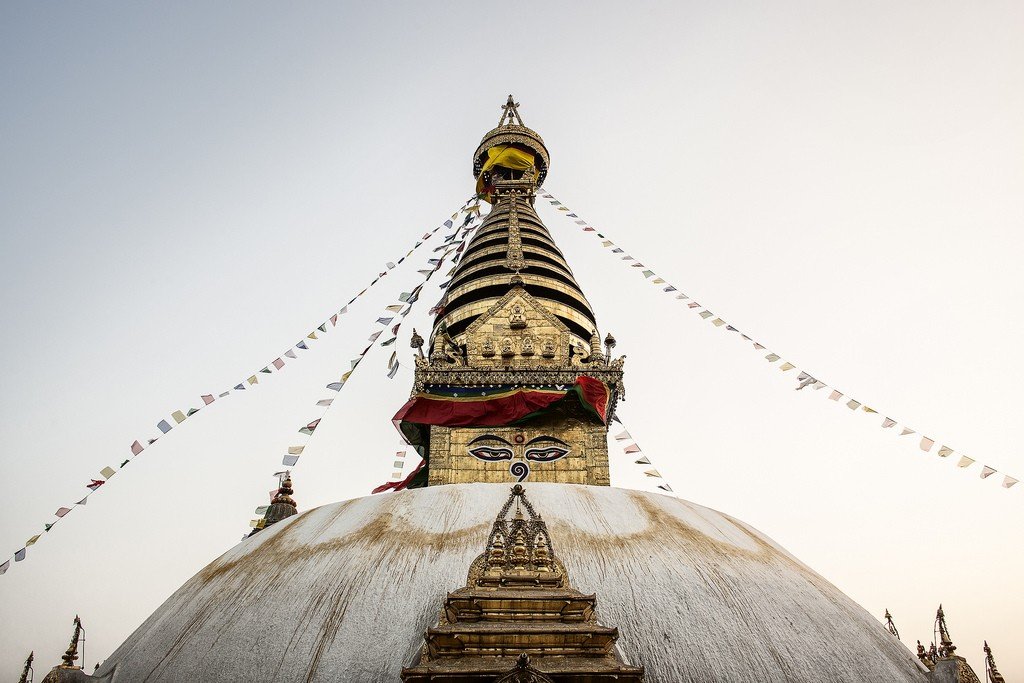
History
Historical records indicate that the stupa was a famous religious monument as early as the 5th century CE, with the approximate time of construction attributed to the reign of King Manadeva (464-505 CE).
.The main legend of the origin of the stupa Svayambunath says that millennia ago the hill on which now stands Svayambu was an island in the middle of the lake and one of the seven Buddhas of the past dropped a white lotus seed. Years passed and when the flower began to bloom, the nearby Boddhisattva Manjushri saw a blue glow over the island and was so enchanted by its power that he chopped the rocks with his sword to make it easier for people to reach the sacred place. Since archaeologists have proven that there was once a large lake on the site of the Kathmandu Valley (making the soil one of the most fertile in Nepal), the mystical legend is becoming a reality.
.What to see
Swayambhunath is a pilgrimage site for Tibetans and Hindus and is a stone stupa with a golden spire and conical tip. Most of the iconography of the stupa is by Tantric Nevar masters (a similar painting can be seen in Bhaktapur), but despite the paucity of Tantra (also known as Vajrayana) compared to the Mahayana and Theravada Hindu currents, Swayambhu is revered by all Tibetan and Indian schools.
.The eyes on the spire, displayed on each of the four sides of the stupa, symbolize the One God, Wisdom and Compassion. The nose is identified with the number “one” and suggests that enlightenment can only be attained in one way. The image has no ears because God is immune to the worldly aspirations and requests of pilgrims.
At the top of the stairs at the foot of the Stupa is a huge dorje (vajra) symbolizing the Dharmadhata in the form of a mandala of Manjushri. It was created and placed here during the reign of King Pratapa Malla, who also built a grand staircase and two shikharas (Hindu temples).
.Just behind the main stupa opposite the main staircase is the Harithi temple. Children, often newborns, are brought here as this goddess is the protector of children. There are often long queues here, especially in the mornings. Legend has it that when Buddha met Harithi, she was devouring children. Hariti was a cannibal demon (yaksha, as the Tibetans say). She had several hundred children, loved them very much and to feed them, she devoured other people’s children. The mothers begged the Buddha to save them. Then the Buddha stole one of Hariti’s sons and hid him, she tried to find him and could not. When she asked the Buddha for help, the Buddha pointed out to her that she was suffering because one of her hundreds of children had been lost, but how the mothers from whom she had taken children were suffering. She realized this and vowed to protect all children. It is also said that when she asked, “What will I eat?” Buddha replied that from then on, his followers would leave the first part of their meals for her.
There are many stories associated with this temple. Khamtrul Rinpoche (18th century) wrote the following: “I have noticed that Tibetans do not show much respect for Harithi, as she is only a yakshini. When they visit the temple, they disdain the goddess and do not make offerings to her. This is foolish on their part and shows that these people have not received many teachings.”
He explains further, “Indeed, she is not an object of refuge equal to the Buddhas and Bodhisattvas. However, neither is she equal to the level of lower beings like the spirits of the locality. Among the powerful beings who are focused on beneficent activities after meeting the Buddha, some have attained great importance by fulfilling the role of guardians, even though they do not formally belong to the class of Dharmapalas.” Therefore the Buddha said: “Those who follow me as a teacher should offer the first part of the meal to Yaksha Hariti.”
.
He adds: “Having met the Buddha face to face she became the guardian of his teachings and thus became worthy of reverence as the Dharma itself. Thus, keeping this in mind, we should make offerings to her with great respect and a pure mind.”Thus she became the guardian of the Swayambhu Stupa as well, and as some sources attest, when the two fang temples were built her statue miraculously showed some interference as an expression of displeasure.
.Just behind the stupa is a black stone Buddha statue. When Khamtrul Rinpoche IV visited Swayambhu in the 17th century he said it was one of the most sacred places in the Kathmandu Valley.
.
Next to the large Stupa are many smaller stupas and images of Buddhist and Hindu deities. Most of them were sponsored by kings, Brahmins, wealthy landlords or other followers from Kathmandu from early times up to the present day:
.Vasubandhu Stupa
The great master Vasubandhu spent some time in Swayambhu. Legend has it that one day he was sitting just on the spot where the Stupa now stands and looking at the hills below. He saw a monk who was cultivating a field, took off his robes and wrapped them around his head to protect himself from the sun. Seeing this, he exclaimed: “Well, if this is the state of Dharma then there is no point in me slaning”, and he started reciting the dharani (long mantra) of Ushnishivijaya backwards, his skull cracked and he died. Later his remains were placed in a stupa.
.Chakrasamvara Mandala
To the right and slightly down from the main Stupa is a building that houses the huge mandala of Chakrasamvara. The five levels of the mandala correspond to the five kayas. Outside the door is a small courtyard where people place offerings, etc. Inside are wall murals that are several centuries old but well preserved. Inside are several doors leading down to the mandala of Chakrasamvara. This is believed to be the seat of Chakrasamvara’s power. A king of Nepal wanted to become the great maharaja of all Asia and one day he came here to ask for power. He went inside but didn’t come out for days. When he came out, it turned out that he had gone mad. Only non-War Vajra masters are allowed to enter the inner chambers now.
This hill is also called Nagarjuna’s Hill. It is the proper place where the Nevara Vajraacharyas received their first initiations and teachings. Why it is named after Manjushri is not very clear, but it is believed that the first teaching given here was Manjushri Nama Sangiti, which became widespread in the Kathmandu Valley. There is a fee to enter Swayambhunath, a ticket can be purchased for 100 rupees at the ticket office in front of the complex. Around the stupa and in the alleys nearby there are several stalls selling souvenirs and refreshments, there are also a couple of restaurants where you can order a full Nepali meal. Toilet facilities are also available here, look out for signs. You can reach Swayambhunath from Thamel and the eastern districts of Kathmandu in 15-20 minutes by cab for 150-200 rupees. From Thamel to Swayambhunath can also be reached on foot, the journey will take approximately 30-40 minutes. From Swayambhunath, there are mini buses to Kathmandu’s main basestand.Tourists
How to get there
